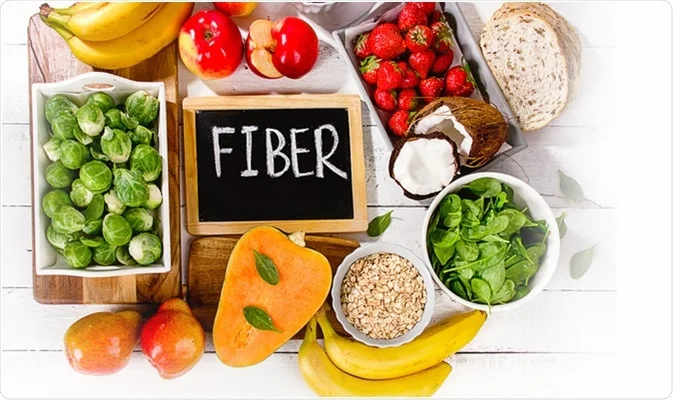Certainly! Here are some practical tips to help you include more fiber in your diet:
1. Choose Whole Grains: Opt for whole grain products such as whole wheat bread, brown rice, whole grain pasta, and oatmeal instead of refined grains. Whole grains contain more fiber as they retain the bran and germ layers.
2. Increase Vegetable Intake: Incorporate a variety of vegetables into your meals. Include leafy greens, broccoli, carrots, Brussels sprouts, and other fiber-rich vegetables. Aim to have them as a side dish, in salads, stir-fries, or as snacks.
3. Eat More Fruits: Enjoy a variety of fruits, including those with edible skins or seeds like apples, pears, berries, and citrus fruits. These fruits are generally higher in fiber. Instead of juicing, consume whole fruits to benefit from the fiber content.
4. Include Legumes: Legumes, such as beans, lentils, chickpeas, and split peas, are excellent sources of fiber and protein. Add them to soups, stews, salads, or use them as a meat substitute in recipes like bean burgers or lentil tacos.
5. Snack on Nuts and Seeds: Nuts and seeds like almonds, walnuts, chia seeds, and flaxseeds are not only nutritious but also high in fiber. Enjoy them as a snack or sprinkle them on yogurt, salads, or cereals.
6. Choose High-Fiber Snacks: Opt for fiber-rich snacks like raw vegetables (carrot sticks, cucumber slices) with hummus, fresh fruits, air-popped popcorn, or whole grain crackers.
7. Use Whole Grain Flour: When baking, replace refined white flour with whole grain flour or a blend of whole grain and white flour. This can increase the fiber content of your baked goods.
8. Add Fiber Supplements: If it's challenging to meet your fiber needs through food alone, consider using fiber supplements such as psyllium husk or wheat bran. However, it's best to consult with a healthcare professional before starting any supplements.
9. Read Food Labels: Check the nutrition labels on packaged foods to identify products with higher fiber content. Look for products labeled as "whole grain" or "high in fiber" and choose cereals, bread, and pasta with higher fiber content.
10. Increase Water Intake: As you increase your fiber intake, it's crucial to drink plenty of water. Adequate hydration helps the fiber move smoothly through the digestive system and prevents discomfort.
Remember, when increasing fiber intake, do so gradually and spread it throughout the day to allow your body to adjust and minimize digestive issues. Aim to reach the recommended daily intake of 25-30 grams of fiber for adults, but individual needs may vary.

